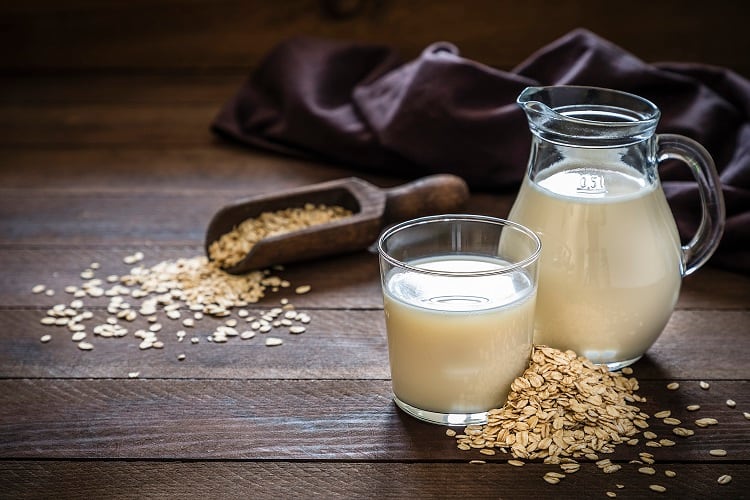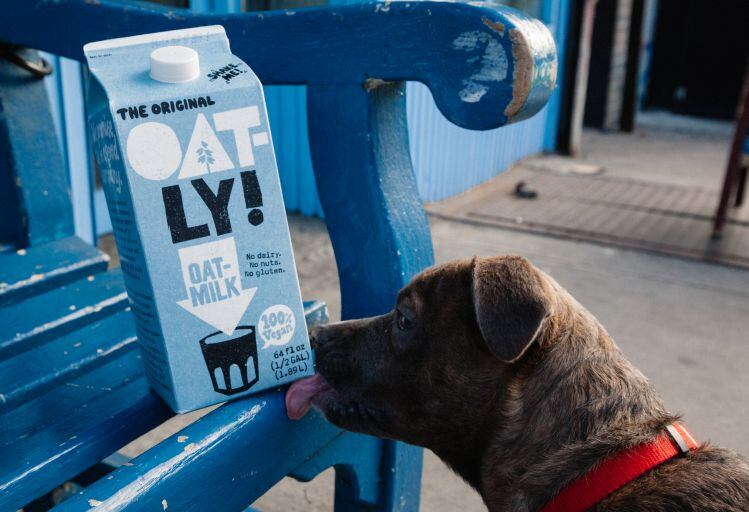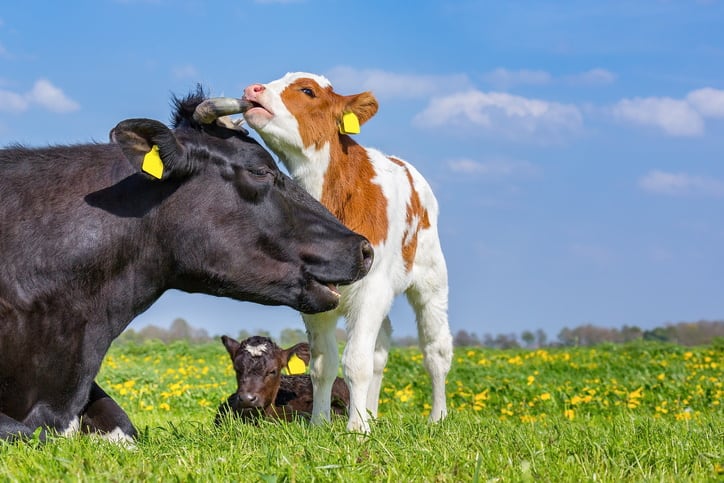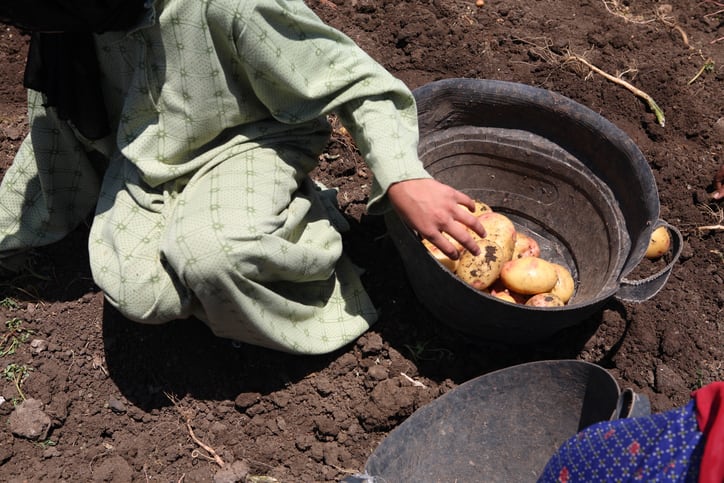The findings are the result of a report commissioned by oat milling business Glebe Farm, located in Cambridgeshire, UK. The company produces a range of gluten-free cereals, flours, and plant-based milk alternatives, including its oat drink product: PureOaty.
Conducted by independent consultancy NFU Energy, the report aims to examine the carbon dioxide (CO₂) footprint of PureOaty, from initial cultivation up to the point of distribution.
The outcome? Per litre of PureOaty produced, an average of just 0.29kg of CO₂ is emitted, which Glebe Farms claims is lower than any other oat drink currently reporting comparable figures in the UK. Oatly’s oat drink, for example, has a footprint of 0.558 CO₂e per litre of product.
So what makes Glebe Farm’s PureOaty the UK’s ‘glass-leader’ in this context?
Oat cultivation and harvest
To calculate PureOaty’s carbon footprint, Glebe Farm applied the GHG Protocol covering three scopes.
Scope 1 concerns direct emissions from owned or controlled sources; Scope 2 concerns indirect emissions from the generation of purchased energy for own use; and Scope 3 concerns all indirect emissions (not included in Scope 2) that occur in PureOaty’s value chain, including both upstream and downstream emissions.
The report concludes that final GHG emissions for the production of PureOaty, from cradle to distribution, is 288.71kg CO₂e/tonne.
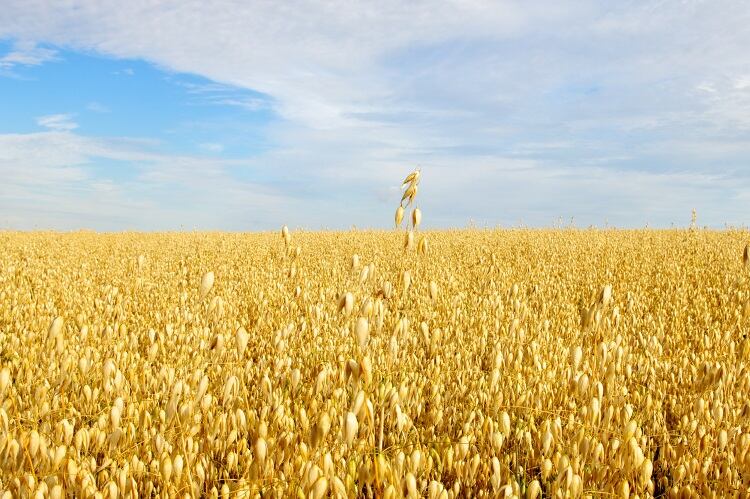
To kickstart this calculation, NFU Energy first quantified the emissions associated with the production of oats. Glebe Farm sources its oats from several arable farms in its supply chain, as well as from its own operations.
Activities addressed include residue management, fertiliser production, soil and fertiliser inputs, crop protection, energy use, and off-farm transport. The most significant carbon footprint was associated with soil and fertiliser inputs, followed by upstream emission from the production of that fertiliser.
“Replacing some, or all, of the synthetic fertiliser use with organic fertiliser will significantly reduce the upstream Scope 3 emissions, additionally, improving the effectiveness of fertiliser application will reduce both the Scope 1 and Scope 2 emissions,” noted NFU Energy.
Oat milling and milk production
Once the oats have been harvested and taken to the milling facility, they are processed: essentially, the groats are separated from feed oats and chaff.
There are three steps to the oat milling process: dehulling, heating/steaming, and drying/cooling. To power these steps, electricity, natural gas, and biomass are used.
Overall, heating/steaming uses the most energy (a mixture of natural gas and electricity), followed closely by dehulling (electricity only).
“Increasing the proportion of heat from biomass, if possible, would reduce the emissions from gas…” suggested NFU Energy. Other factors that could have a ‘significant impact’ on energy use include installing variable speed drives, pumps, and fans.
“As a final report, once energy reductions and increases to efficiency have been implemented, electricity emissions can be offset through the purchase of green electricity.”
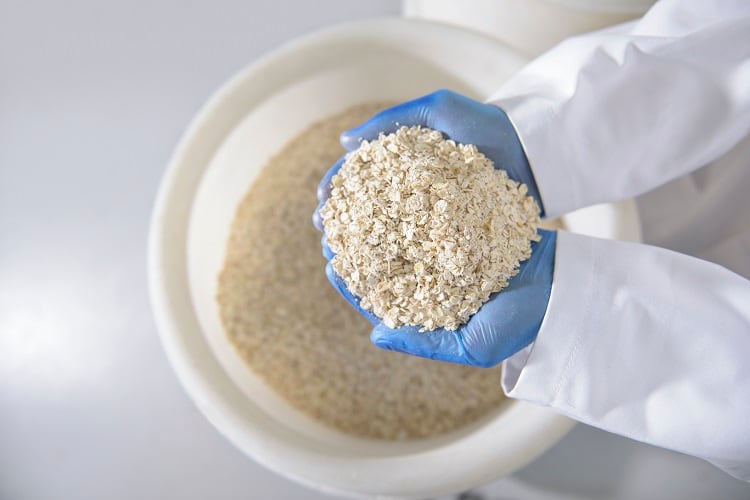
While around 4% of flakes are sold off as a co-product, the remaining are processed and mixed with water, oil, and enzymes to produce PureOaty. Such processing requires energy powered by electricity, gas, and biomass.
The PureOaty product is then transported to UHT processing, where it undergoes final processing and packing – again powered by electricity and natural gas – before being transported to distributors.
Within these processes, the largest emissions source ‘by far’ is UHT processing – a part of the process Glebe Farm does not operate. The second highest emissions source, NFU Energy suggested, is the upstream emissions associated with its Tetra Pak packaging.
“In order to reduce these emissions, Glebe Farm Foods can look into packaging sourced in a more circular way with a higher proportion of recycled material.”
What makes PureOaty ‘best-in-glass’?
Compared to PureOaty’s competitors, Glebe Farm puts its lower emissions footprint down to local and streamlined production.
“Glebe Farm is an independent British business that grows its own oats as well as producing oat drink on-site at the farm,” a company spokesperson told FoodNavigator.
This offers a number of benefits, we were told, including reduced transportation. “Not only are Glebe Farms oats harvested within an average of 40 miles from the farm, but milled and ‘milked’ on site too.
“By creating the UK’s first oat drink facility in the UK to make oat drink from scratch, we can offer excellent food miles and lower carbon burden.”
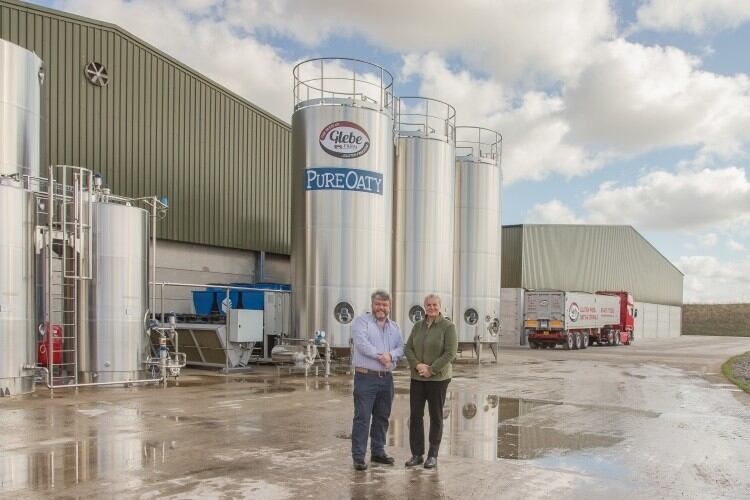
Glebe Farms stressed that ‘unlike very many oat drink brands on the market’ its PureOaty product is ‘never turned into concentrated form’ – a step that requires additional energy consumption.
Vertical integration, the spokesperson continued, also plays a key role. “Since Glebe Farm grows and mills its own oats, we can make use of the oat chaff and other by-products from the milling process to power our production plant. Total traceability to all our farmers, and large-scale experience in each stage, also greatly helps us to know the energy used.”
And finally, Glebe Farm suggested it is also one of the category leaders in terms of renewable heat and electricity use. “We already have two biomass generators and will be bringing a third online soon. Glebe Farm also uses solar energy to power its plant and will continue to look to reduce usage of non-renewable sources.”
The Oatly comparison
The largest proportion of PureOaty’s emissions comes from UHT processing and packaging emissions (52%) and upstream emissions from packaging (21%).
The remaining emissions are associated with Glebe Farm’s operated processing (10%), transport (8%), non-oat ingredients (6%), and finally, cultivation of oats (4%).
This differs significantly from Oatly’s global emission sources. According to the company’s 2020 sustainability report, the two main drivers of its CO₂ emissions are transportation and the cultivation of ingredients.
Unlike Glebe Farms, which produces PureOaty in the UK for sale in just four countries, Oatly owns three production sites itself – in Sweden, the Netherlands, and the US – and sells its oat drink in around 16 countries worldwide.
“Distribution of finished products is by far the biggest driver of transportation emissions, and more than half of it is due to shipping products to Asia from factories in Europe and the US,” the company explained in its report. “The good news is that as we start up production in Asia, we expect to drive down this impact.”
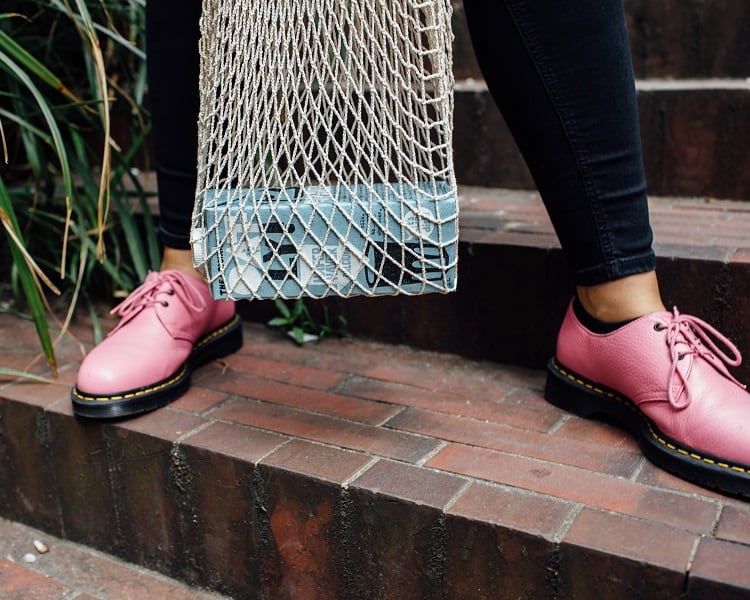
Concerning cultivation of ingredients, Oatly noted that its per-litre climate impact decreased -17% from 2019. The main reason is that it now sources from more low-impact countries such as Sweden and Canada.
“The climate impact from oats depends on multiple factors, including farming systems and practices, types of land, and average yield. The biggest volume of oats we source from is from Sweden, cultivated with the guarantee that no growth regulators or glyphosate are used.”
Elsewhere, Oatly’s climate impact from packaging was down -11%, and energy consumption (KWH) decreased -16%. However, the climate impact from energy increased +35%, due to the share of energy from renewable sources going down from 62% to 49%. “We’ve recognised that sourcing renewable energy is a huge challenge as we expand production to new regions.”
Healthy competition?
Overall, both companies appear happy to have some healthy competition within the category, as it means greater uptake in carbon footprint calculations.
“We think it’s great that more companies are joining us to raise awareness around the effect our food choices have on the climate and giving people information to make better food choices that reduce their climate impact,” an Oatly spokesperson told FoodNavigator.
“In fact, we think it should be mandatory to state the carbon footprint of a product on its packaging.”
Glebe Farm’s PureOaty product does not carry its carbon footprint on-pack, with a spokesperson telling this publication it will be making decisions about its pack design once the legal challenge from Oatly over its PureOaty branding has been resolved (see fact box).
“Glebe Farm is pleased to make progress with carbon reduction and reporting within the category and we also see an opportunity to champion the benefits of British farming and local food production in general,” said the company spokesperson. “We know there is always more to do, and this is just the start of an ongoing commitment to improve sustainability.”
Similarly to Oatly, Glebe Farms encourage more in the category to calculate their carbon footprint. “We genuinely support more to do so. Our project aim is to create climate change reduction for the benefit of everyone, and we look forward to this accelerating as more companies embrace similar approaches.”
The spokesperson continued: “Hopefully we can inspire more brands and manufacturers to examine their own impact.”
Glebe Farm and Oatly are currently in legal proceedings, after the latter took Glebe Farm to court over claims of trademark infringement.
Oatly argues that Glebe Farm’s branding adopts the ‘informal’ and ‘simple style’ of packaging and irregular lettering used by Oatly, and that overall, the branding oversteps the line from acceptable to unfair ‘by a considerable margin’.
Glebe Farm says it was ‘surprised’ by the original action taken against it, but feels it ‘has done nothing wrong’.
The hearing took place over 9-10 June 2021, with the judgement due by the end of July.


